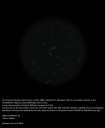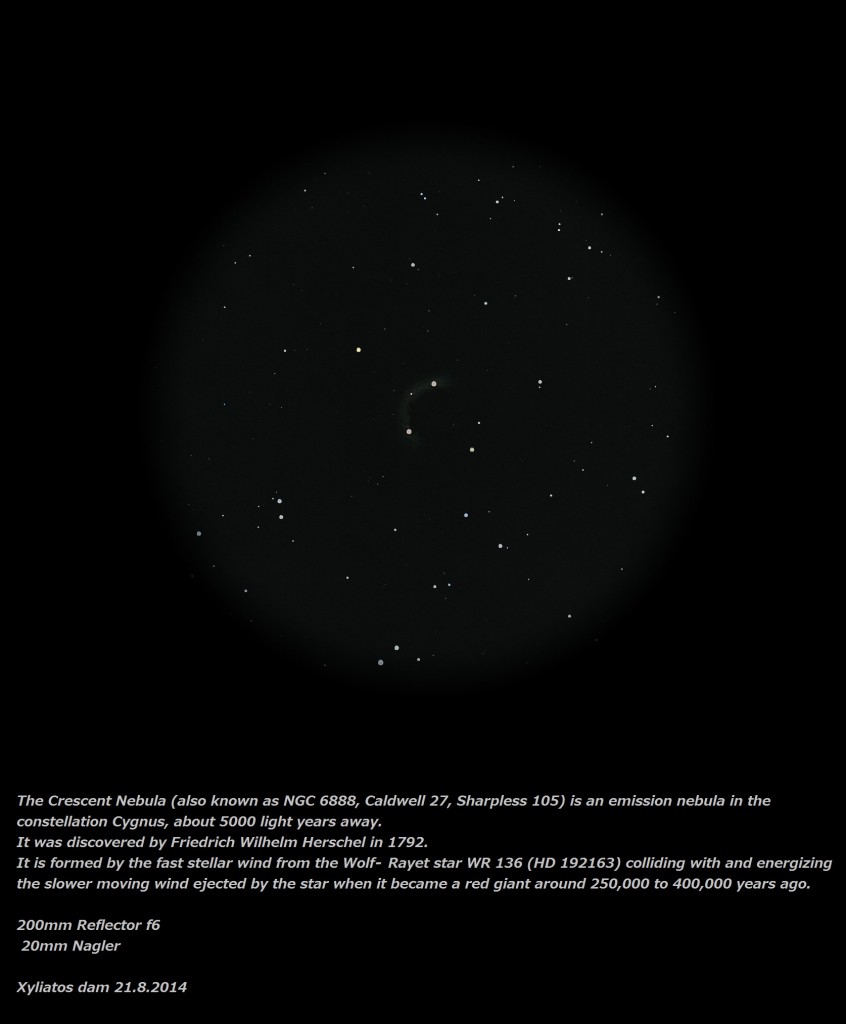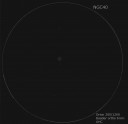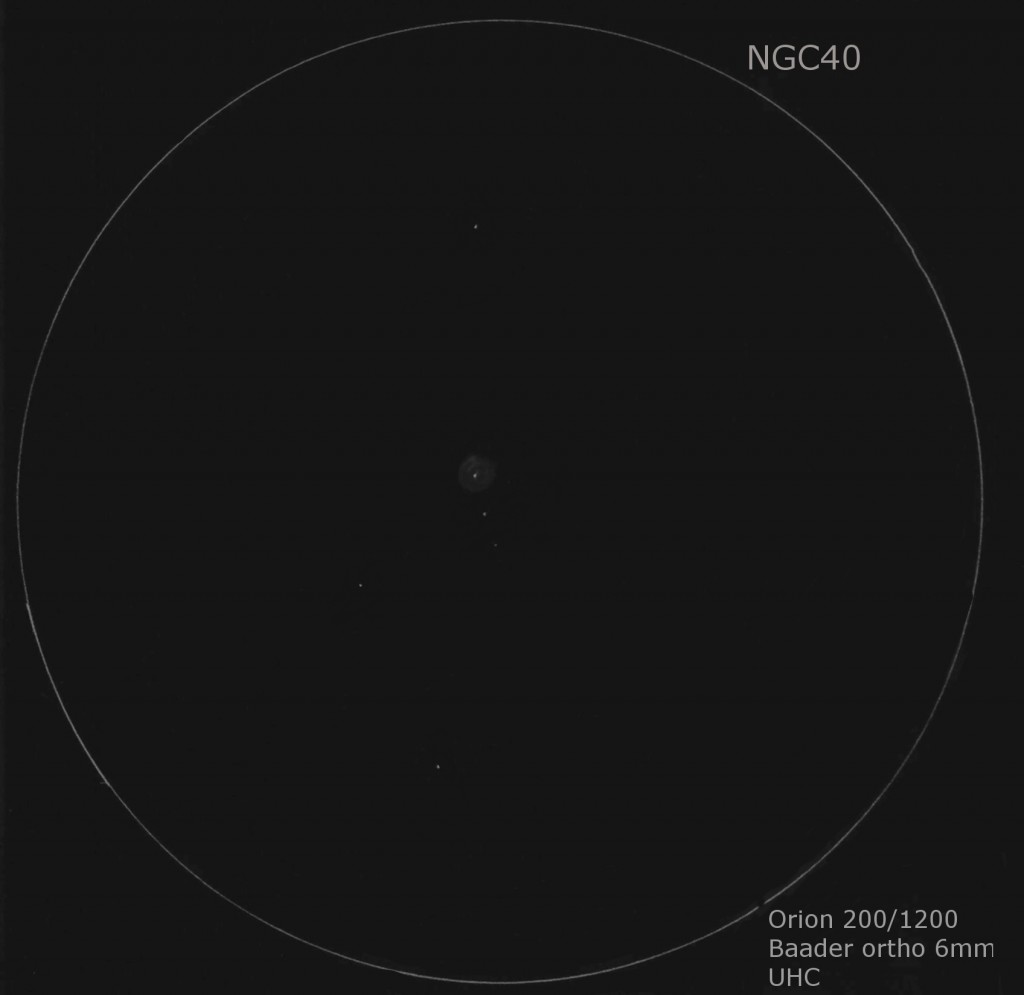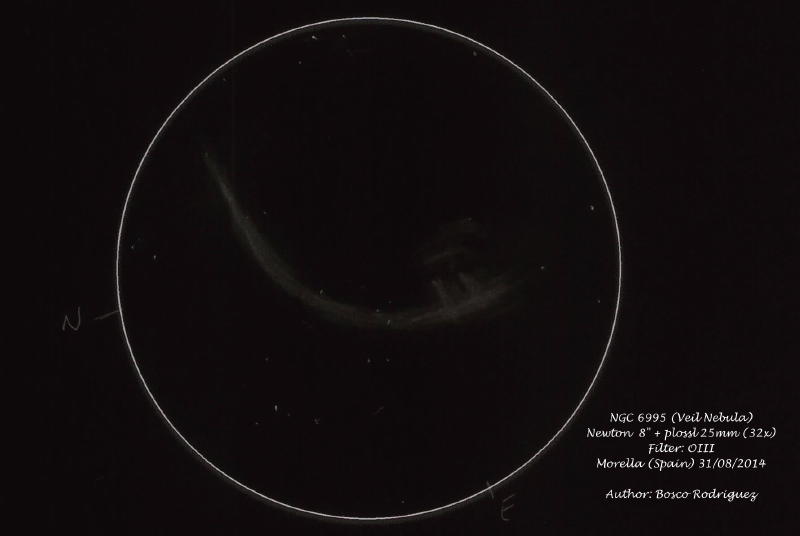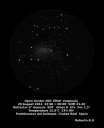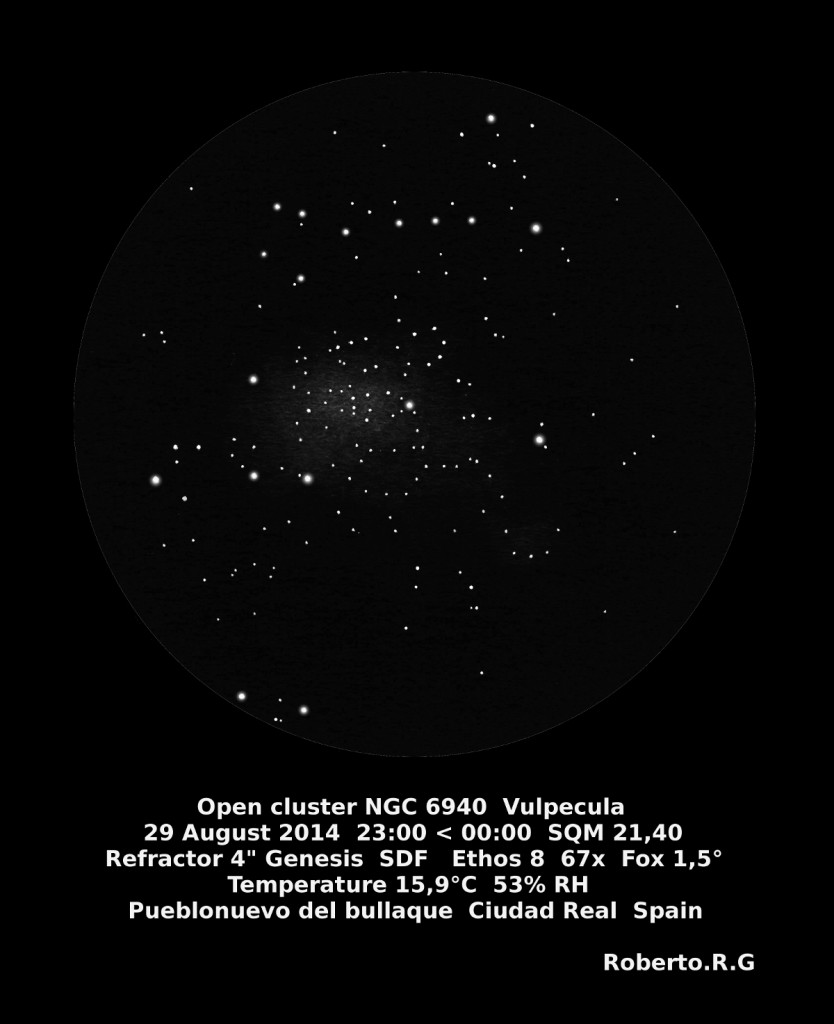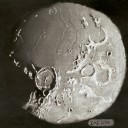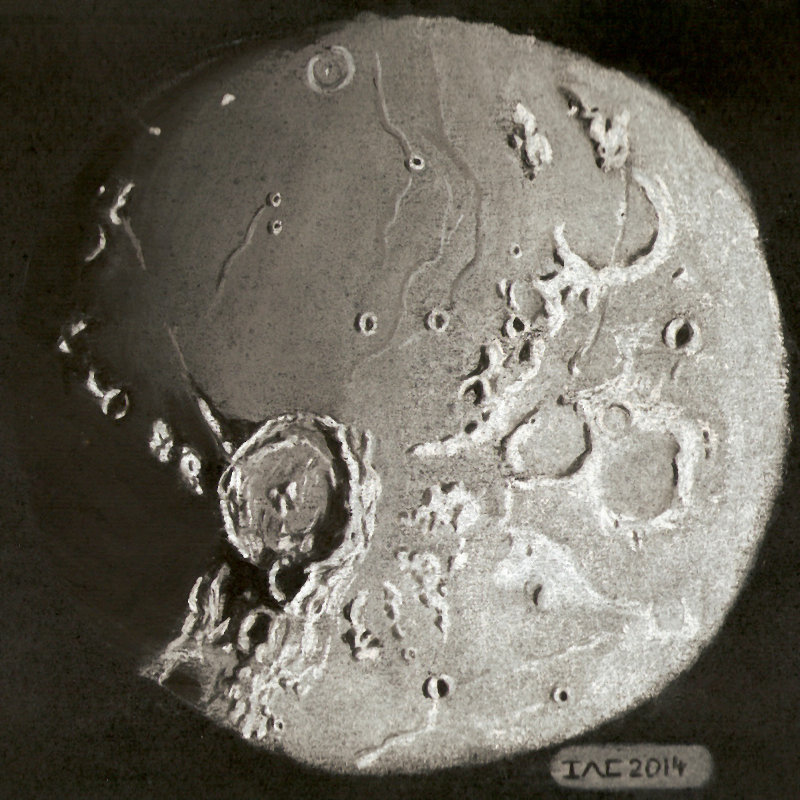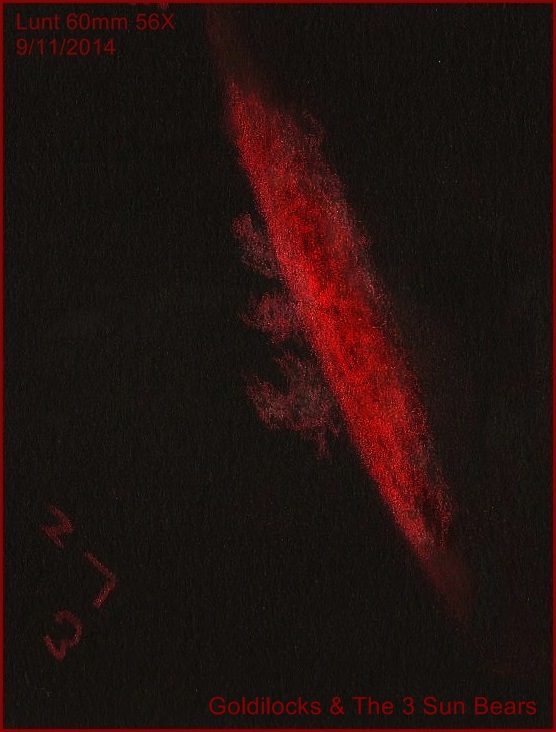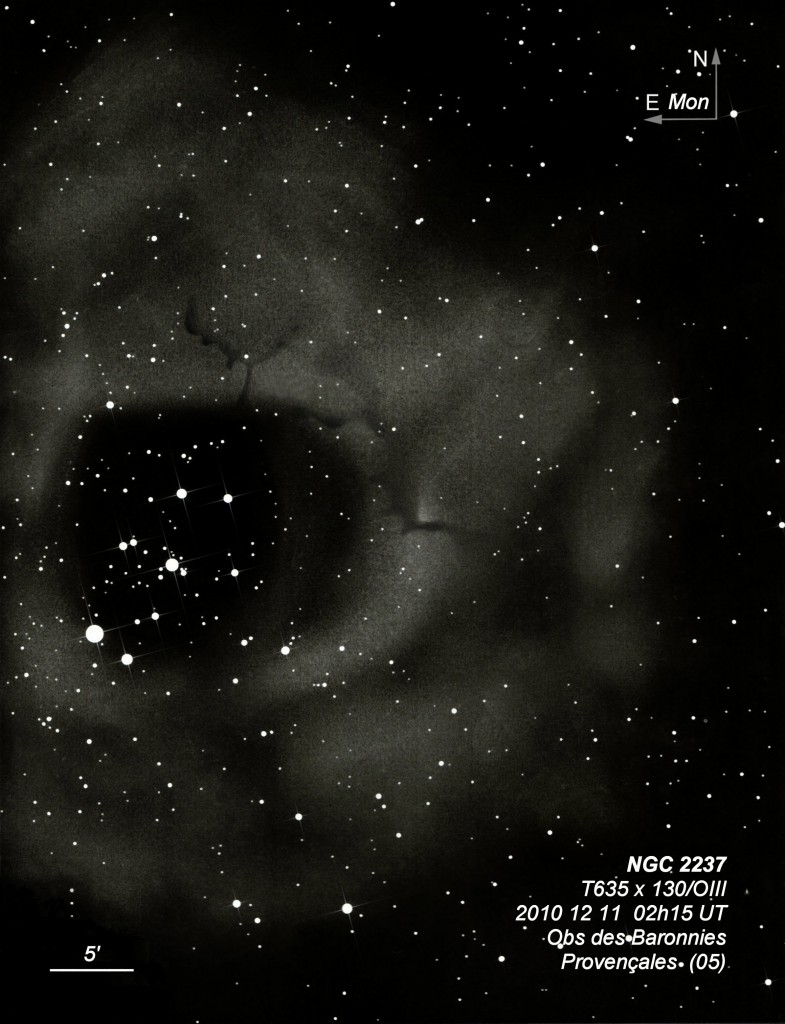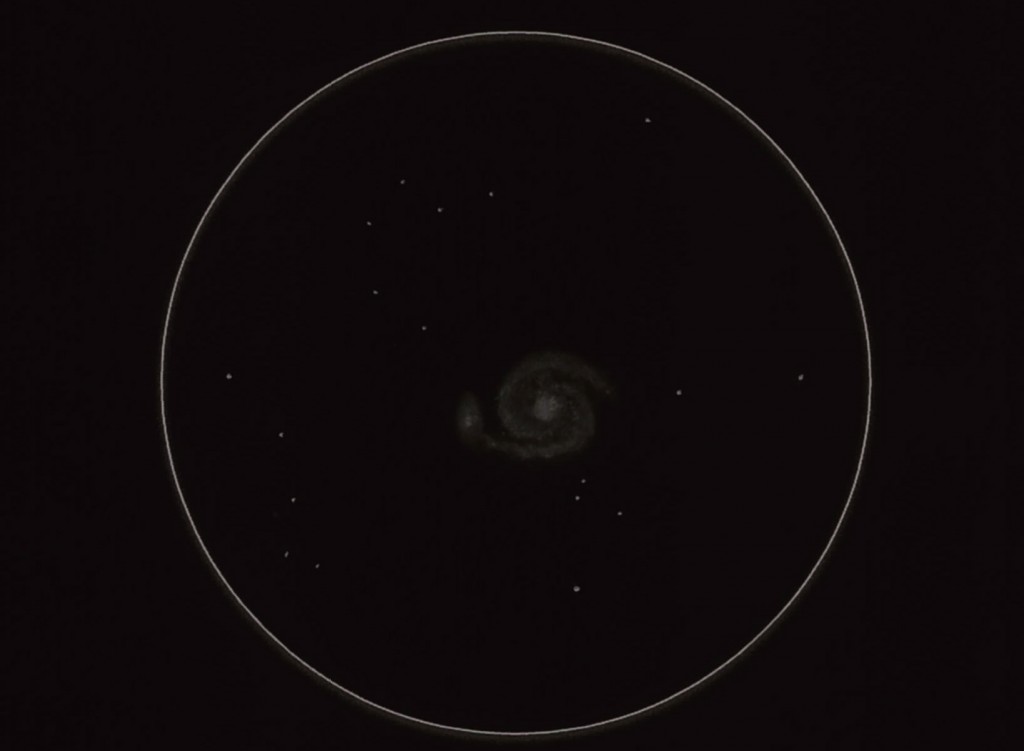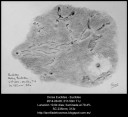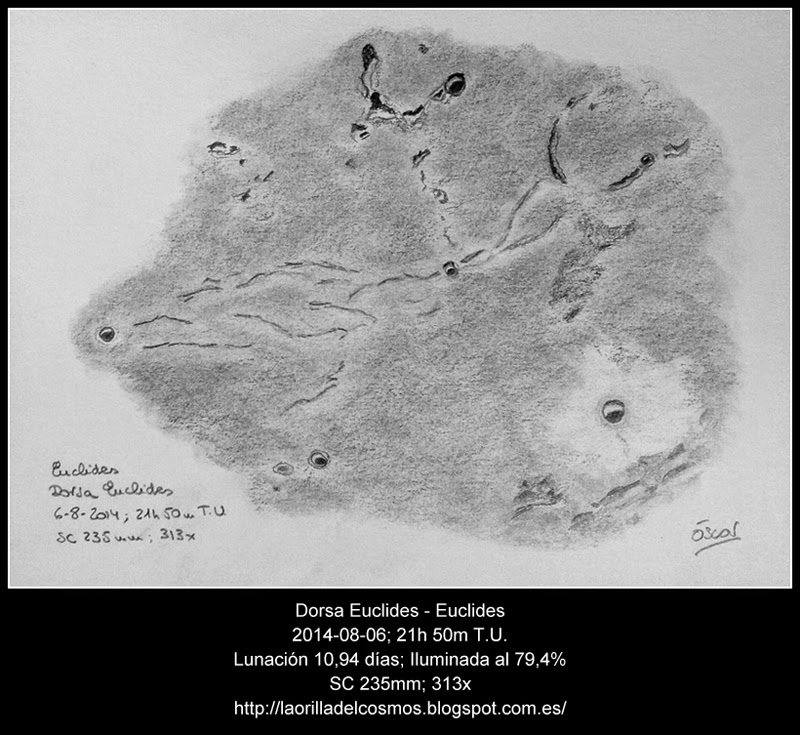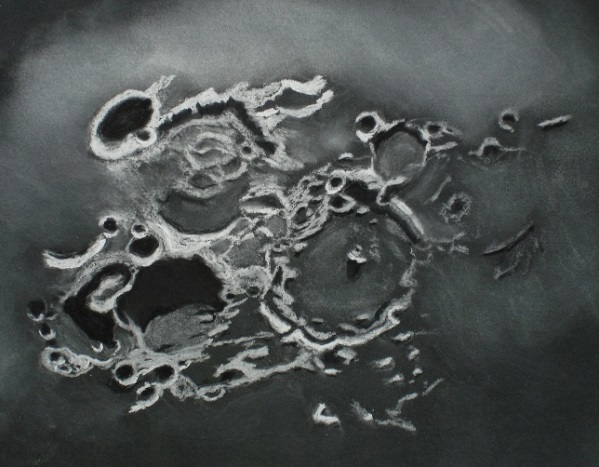
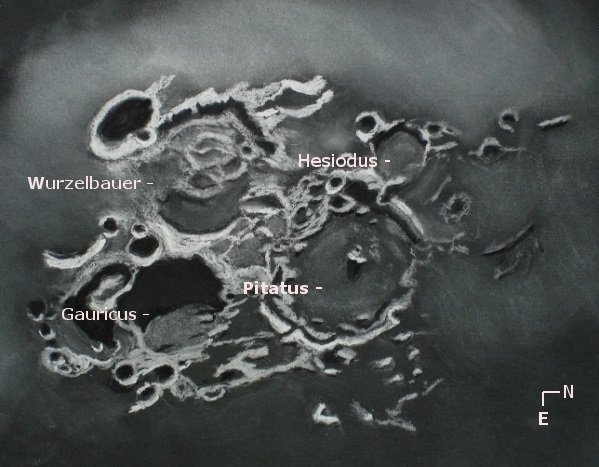
Pitatus is an old, large 97 km. diameter crater on the edge of Mare Nubium. The floor of this crater has a linear central peak which was casting a fine elongated triangular shadow at the time of this observation and sketch. To the south craters Wurzelbauer (88 km.) and Gauricus (79 km.) could be seen; both of these craters show badly warn rims; both much older than Pitatus. Attached to the northwest rim of Pitatus is the crater Hesodius (43 km.). At about the eighth or ninth day of lunation you can observe the famous “sunrise ray” beaming across the floor of Hesodius through a break in the wall with Pitatus. This is certainly a sight worth observing.
Sketching:
For this sketch I used: Black Strathmore 400 Artagain paper, 12”x 9”, both white and
black Conte’pastel pencils and blending stumps.
Telescope: 10 inch f/5.7 Dobsonian and 9mm eyepiece 161x
Date: 09-17-2014 10:00-11:25 UT
Temperature: 5°C (42°F)
Clear, calm
Seeing: Antoniadi III
Co longitude: 187.3°
Lunation: 22.6 days
Illumination: 39.0 %
Frank McCabe

